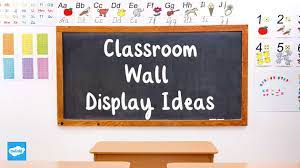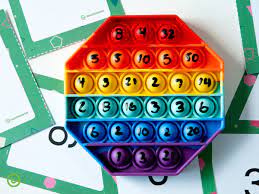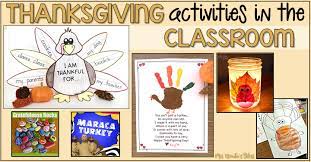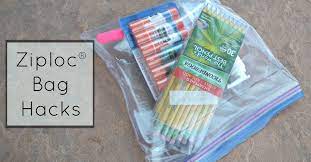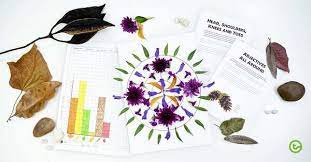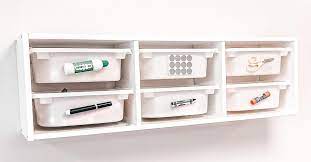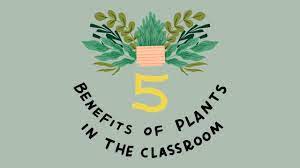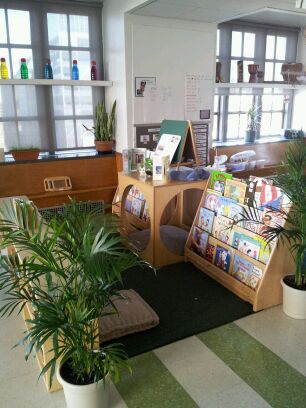Classroom walls are not just the physical boundaries of a learning space; they are also canvases for educational inspiration. Smart and creative wall displays can significantly impact student engagement and classroom ambiance. Here are 10 simple but amazing ideas for classroom wall displays:
1. Quote of the Week Board: Use a section of your wall to inspire students with a weekly quote. Incorporate different fonts and colors, or let students pick and design the week’s quote.
2. Historical Timeline: Create an interactive timeline that can be modified throughout the course. This can be thematic, such as focusing on art history, scientific discoveries, or world events.
3. Word Wall: A word wall can help students with vocabulary associated with your subject. Make it interactive by having them contribute words they’ve learned each week.
4. Student Work Showcase: Dedicate a space where you can display exceptional work that your students have created, rotating it regularly to give everyone a chance to shine.
5. Interactive Whiteboard Wallpapers: Stick up whiteboard wallpapers where students can write down thoughts, answers, or draw diagrams as part of collaborative learning.
6. Literature Tree: Turn family trees into literature trees for English classes by adding branches that represent different genres and leaves that detail authors or specific books from each genre.
7. Math Formula Murals: Paint murals of essential math formulas on the wall, or use vinyl decals that can be moved around. This serves as both decoration and a handy reference for students.
8. World Map Exploration: For geography-intensive courses, having a large map on the wall where students can pin places they’ve studied or where current events are happening in the world adds an interactive element to lessons.
9. Classroom Rules Infographics: Display the rules and expectations creatively through an infographic that combines images and text to make an engaging display.
10. Seasonal Art Projects: With each new season, create themed artwork that corresponds to holidays or weather changes—even changing science concepts with the seasons (e.g., leaf anatomy in fall).
These displays bring life to classroom walls while enriching the curriculum and making learning more vibrant for everyone involved.
14 Educational Ways to Use Popping Fidget Toys in the Classroom
Popping fidget toys, often known as “pop its,” have become a popular tool to help students focus and manage stress in the classroom. Beyond their soothing effect, these tactile toys can be incorporated into educational activities to enhance learning in fun and interactive ways. Here are 14 educational ways to use popping fidget toys in the classroom:
1. Mathematics – Counting Practice:
Young students can use popping fidget toys to practice counting. Popping a certain number of bubbles can help reinforce number recognition and counting skills.
2. Fine Motor Skills Development:
Manipulating the bubbles on popping fidget toys can help develop fine motor skills essential for writing and handling small objects.
3. Pattern Recognition:
Children can practice pattern recognition by popping bubbles in specific sequences such as alternate pops, or creating shapes and letters.
4. Stress Relief During Tests:
Allowing students to use popping fidget toys during tests can reduce anxiety and improve focus, potentially leading to better performance.
5. Storytelling Aid:
Popping fidget toys can be used to represent characters or objects in a story, providing a tactile method to engage with narrative structures.
6. Teaching Probability:
Use the toys to create games where students predict which side will have more popped or unpopped bubbles after a certain number of flips, providing a hands-on approach to teaching probability.
7. Sensory Breaks:
Short breaks using popping fidget toys can provide sensory input that some students need in order to refocus on their work.
8. Language Learning – Phonics Enhancement:
Each bubble popped can represent a sound or syllable, helping with phonics and pronunciation exercises in language learning.
9. Music Education:
Create rhythms and patterns by popping different bubbles, integrating sensory play into music education.
10. Spelling Practice:
Assign each bubble on the toy a letter and have students pop the bubbles in the correct order to spell words.
11. Science Experiments – Predicting Outcomes:
Use popping fidget toys to hypothesize and test outcomes, such as estimating how long it will take for all the bubbles to be popped by different methods (pushing individual bubbles vs pressing down on the entire toy).
12. Time Management Tool:
Set challenges for students to complete tasks before they’ve finished popping all the bubbles on their toy.
13. Focus Groups:
During group work, students who are not actively speaking can use the toy to keep their hands busy while still focusing on the discussion.
14. Reward System:
Popping fidget toys can be offered as rewards for good behavior or completing challenging tasks,providing positive reinforcement that encourages effort and achievement.
Incorporating these tactile tools into classroom activities not only makes learning more engaging but also respects diverse learning needs by providing alternative ways for students to process information and express their understanding.
Thanksgiving Activities for the Classroom
Thanksgiving is a wonderful time of year to engage students in the classroom with activities that celebrate the holiday and teach about gratitude, history, and cultural traditions. Here are some Thanksgiving activities that can be incorporated into the classroom setting:
1. Gratitude Tree: Create a gratitude tree on a classroom bulletin board where each leaf represents something a student is thankful for. Students can write what they’re grateful for on paper leaves and attach them to the tree.
2. Turkey Disguise Project: An engaging art project is to give students a template of a turkey and ask them to disguise it so it won’t be eaten for Thanksgiving dinner. They can be as creative as they like, using feathers, sequins, crayons, and more.
3. History of Thanksgiving: In history class, teachers can provide a lesson about the origins of Thanksgiving, including both the traditional story of the Pilgrims and Native Americans as well as the perspectives of different cultures on this historical event.
4. Interactive Storytelling: Have students act out the story of the first Thanksgiving or create skits highlighting what they believe are essential aspects of the holiday.
5. Write Thank You Notes: Encourage students to write thank you notes to staff members at the school, community members, or family members to express their appreciation.
6. Corn Husk Dolls: Take students back in time by having them make traditional corn husk dolls, which were toys made by Native American children during harvest times.
7. Thanksgiving Potluck: Organize a potluck where students can share dishes from their own family’s traditions and learn about each other’s cultural heritages through food.
8. Harvest Games: Play games like bobbing for apples or have a mini pumpkin roll race to celebrate harvest time and have fun.
9. Writing Assignments: Have students write essays or poems about what Thanksgiving means to them, focusing on themes of gratitude, family, or community.
10. Virtual Field Trip: If actual travel isn’t feasible, take a virtual field trip to sites significant to Thanksgiving history, like Plimoth Plantation or Wampanoag homesites.
These activities not only bring some holiday spirit into your classroom but also provide valuable lessons in history, cultural understanding, and thankfulness.
15 Tips Hacks Ziploc Bags Classroom
Ziploc bags can be a remarkable resource for teachers looking to organize, protect, and maximize classroom materials. Here are 15 tips and hacks for using Ziploc bags in the classroom:
1. Station Organization: Use Ziploc bags to create individual activity packets for centers or stations. Each can hold instructions and materials, keeping everything contained.
2. Manipulative Storage: Small math manipulatives like counters or base ten blocks can be stored in Ziploc bags.
3. Puzzle Pieces: Keep puzzle pieces from getting lost by storing them in a bag.
4. Document Protection: Place important papers or student work that needs to be protected from spills and wear into Ziploc bags.
5. Reading Bags: Assemble a book, reading log, and pencil in a Ziploc bag for take-home reading material.
6. Craft Supplies Organization: Sort craft supplies like beads, stickers, or sequins into separate bags for easy distribution during art projects.
7. Ice Packs: Fill a bag with dish soap or corn syrup and freeze it for a flexible ice pack that’s perfect for minor bumps.
8. Word and Letter Games: Use Ziploc bags for individual sets of magnetic letters or printed words for sorting and making sentences.
9. Seasonal Clothing Storage: Store extra clothes for students who have accidents or make messes in labeled Ziploc bags.
10. Seed Growing Experiments: Plant seeds with wet paper towels in transparent Ziploc bags to create mini greenhouses that stick to windows.
11. Sorting Activities: They’re perfect for color sorting, shape sorting, or any other type of sorting activities where small pieces are involved.
12. Sensory Bags: Seal items like hair gel and food coloring or flat marbles in a bag allowing children to safely explore sensory input without making a mess.
13. Flashcards Holder: Use the bags to store flashcards or small phonics cards, which can be easily distributed and packed up after use.
14. Field Trip Organizer: Provide each child with a labeled Ziploc with snacks, a name tag, and any other necessary items for the trip to ensure nothing gets lost.
15. Homework Kits: Send home homework supplies like pencils, erasers, and other stationery inside a bag so students have everything they need at their disposal.
These simple yet effective hacks can streamline classroom management and enhance the learning environment by keeping materials organized, easily accessible, and in good condition.
Using Natural Resources in the Classroom Learning With Nature
The integration of natural resources into classroom learning is a groundbreaking approach that brings the environment into education. This practice can significantly enhance students’ understanding of the world around them, foster a connection with nature, and provide a multifaceted learning experience.
Incorporating natural resources can take many forms within the educational setting. From elementary to high school, educators have the opportunity to enliven their curricula with real-world examples and hands-on experiences. For instance, science classes can benefit tremendously from the direct examination of rocks, minerals, and soil samples during geology lessons. Rather than solely relying on textbook imagery, students get to touch, feel, and see what they’re learning about, which can help to cement their knowledge through sensory engagement.
Mathematics also finds an interesting partner in nature. By measuring the growth of plants or calculating the volume of water in different states of matter, students learn mathematical concepts in a tangible and relevant context. This not only reinforces numeracy skills but also teaches them about plant biology and physical changes in matter.
Language arts classes can draw inspiration from nature by encouraging students to write descriptive essays, poems, or stories about their experiences or observations outdoors. This not only enhances vocabulary but also allows children to practice their expressive skills while being inspired by natural beauty.
One of the most significant impacts of using natural resources in education is on environmental awareness and stewardship. When children learn early on about the biodiversity around them and recognize how each element plays a role in the larger ecosystem, they are more likely to grow up valuing and protecting these resources. Moreover, bringing environmental issues closer to their experiences enables them to understand the implications of human activity on ecosystems and fosters a sense of responsibility for sustainable living.
Challenges such as accessibility to safe outdoor spaces or the supply of materials must be addressed when incorporating natural resources into teaching. Schools with limited access can turn to community parks or local nature centers that often provide educational programs and resources for classes. Virtual resources such as documentaries, online databases, and interactive applications can also serve as effective supplements when direct contact with nature is not feasible.
In conclusion, using natural resources in classroom instruction offers a dynamic way to enhance educational outcomes while promoting environmental literacy and ethical awareness among students. It embodies an engaging avenue for discovery that encourages curiosity, respect for nature, and a lifelong love for learning that permeates beyond school walls.
17 Classroom Storage Ideas for the Busy Teacher
In the life of a busy teacher, organization is key. Having effective classroom storage ideas can make day-to-day activities run smoothly and ensure that both teacher and students can find what they need without hassle. Here are 17 classroom storage ideas designed to reduce clutter and increase efficiency:
1. Mobile Carts: Utilize mobile carts with drawers to organize supplies by category or project, which can easily be moved around the classroom.
2. Hanging File Folders: Use hanging file folders for student work, one for each child, for easy access and organization.
3. Clear Storage Bins: Transparent bins make it easy to see inside without having to open them. Label each bin for quick identification.
4. Book Bins: Designate book bins for different reading levels or subjects so students can easily choose books appropriate for them.
5. Supply Stations: Set up supply stations around the classroom where students can help themselves to pencils, erasers, and other necessary items.
6. Vertical Shelving: Utilize vertical space with tall shelves which take up less floor space but provide ample storage room.
7. Classroom Library Corner: Create a cozy corner with labeled bins or baskets sorted by genre or author for your classroom library.
8. Magnetic Storage Solutions: Use magnetic strips or boards to store small metal items like scissors, paper clips, and staples that are easily lost.
9. Stackable Crates: Sturdy crates can hold heavy items and be stacked when not in use to save space.
10. Door Organizers: Over-the-door organizers with clear pockets are perfect for storing small items and keeping them visible and accessible.
11. Cubbies: Assign each student a personal cubby for their backpacks and lunch bags to keep aisles clear.
12. Rolling Library Cart: A rolling cart can serve as a mobile library or resource center that you can position wherever it’s needed.
13. Teacher’s Toolbox: A multi-drawer desktop organizer can serve as a personalized teacher’s toolbox for frequently used small items.
14. Ceiling Hooks: Use hooks on the ceiling to hang big items like headphones or physical education equipment out of the way.
15. Label Everything: Clearly label drawers, bins, and shelves with large print labels or picture labels for younger students to promote self-sufficiency.
16. Binder Clips & Racks: Organize papers needing immediate action in binder clips on a rack; once dealt with, they can be moved to a filing system.
17. Art Supply Trolley: Keep art supplies tidy and mobile with a trolley; it’s especially helpful in shared spaces where art materials need to be brought out and stored away regularly.
These classroom storage ideas are meant to inspire teachers looking to organize their classrooms effectively. With a bit of creativity and planning, any teaching space can become an oasis of order that both facilitates learning and reduces stress for everyone involved.
Effective Classroom Setup
Creating an effective classroom setup is vital for optimizing student learning and engagement. Though the specific elements can vary depending on the grade level and subject, there are some general principles that can guide teachers in arranging a conducive learning environment.
Firstly, consider the configuration of student seating. Traditional rows may be apt for lecture-style teaching but limit interaction among students. A U-shaped arrangement or clusters of desks encourage collaboration and make it easier for teachers to engage with each student. However, flexibility is key; being able to adapt seating arrangements to fit the day’s activities can enhance the learning experience.
Next, the teacher’s area should be accessible but not necessarily at the center of the room. This creates a more learner-centered environment. The teacher’s desk should be organized and stocked with necessary supplies to avoid disruptions during class.
Visibility is another important factor. Ensure all students have an unobstructed view of instructional areas, such as whiteboards or screens. This might mean angling desks or creating tiered seating for larger classrooms.
Lighting and sound are crucial environmental factors. Natural light is best, but if not available, lighting should be bright enough for reading but not so harsh as to cause eye strain. Acoustic treatments might be required to minimize noise if rooms have hard floors or high ceilings.
Displaying student work and educational materials on walls provides a stimulating environment and can reinforce learning objectives. However, avoid clutter which can distract students.
Incorporating technology thoughtfully is also significant in modern classrooms. Interactive whiteboards, document cameras, and student devices can enhance instruction if integrated seamlessly into lessons without dominating them.
Designing spaces for specific functions within the classroom, such as a reading corner or a science center, facilitates hands-on activities and independent learning opportunities.
Consideration of inclusivity ensures that the classroom setup meets diverse learning needs—for instance, providing clear pathways for physical accessibility and ensuring resources are available at varied levels of difficulty to cater to different learners.
Lastly, involve students in setting up and maintaining the classroom environment. Ownership of their space can increase students’ respect for their environment and each other.
5 Benefits of Plants in the Classroom
The inclusion of plants in the classroom environment offers a multitude of benefits that reach far beyond aesthetics. These green additions can significantly enhance both the learning experience and the overall wellbeing of students. Let’s explore five key benefits that plants contribute to a classroom setting.
1. Improved Air Quality: Plants have the natural ability to filter pollutants from the air, which is particularly beneficial in a classroom where numerous students are sharing the same space. By absorbing toxins and carbon dioxide, they release oxygen, thus improving the quality of indoor air and creating a healthier learning environment.
2. Enhanced Concentration and Memory: Several studies have revealed that being around plants can increase memory retention and concentration levels by up to 20%. The presence of plants in a classroom can lead to better performance on tasks that require attention, accuracy, and strong recall abilities.
3. Stress Reduction: The calming effect of nature is well-documented, and bringing plants into an educational setting can help reduce stress among students. This stress relief is crucial in a high-pressure environment, as it can decrease anxiety and promote a sense of wellbeing which is conducive to learning.
4. Foster Responsibility and Engagement: Caring for classroom plants can teach students responsibility as they learn about watering schedules and plant maintenance. This interaction engages them with the natural world, fostering environmental awareness and promoting hands-on learning opportunities outside traditional academic approaches.
5. Promotes Aesthetics and Improves Classroom Environment: Plants can transform the look and feel of a classroom by adding color, texture, and vitality. An aesthetically pleasing environment is more inviting and can stimulate creativity while encouraging students to take pride in their surroundings.
Integrating plants into academic settings not only brightens up the space but also brings with it significant cognitive, emotional, and environmental advantages that make for a more dynamic and effective learning experience.
9 Secrets to a Calm Classroom Environment from Expert Teachers
Creating a calm classroom environment is essential for both student learning and teacher sanity. Expert teachers often have tricks up their sleeve that they’ve honed over years of practice. Here are nine secrets to achieving that serene class setting:
1. Establish Clear Rules: Having a set of clear, consistent rules from day one sets the tone for the classroom. Students know what is expected of them and the consequences for misbehaving.
2. Build Positive Relationships: Take time to get to know your students individually. This can create mutual respect and understanding, which leads to a calm environment.
3. Use Non-Verbal Cues: Sometimes a look, gesture, or light tap on the desk is all you need to quiet a noisy room without raising your voice.
4. Incorporate Quiet Time: Dedicating a short period during class for silent reading or individual work can help students learn to appreciate quiet.
5. Choose Seating Wisely: Consider the layout of desks and sitting arrangements to minimize distractions and noise levels.
6. Use Background Music: Soft music can be very soothing and can drown out disruptive noises in the classroom.
7. Stay Organized: An organized classroom can prevent chaos. When everything has its place, it reduces clutter and helps maintain a peaceful atmosphere.
8. Lead by Example: If you remain calm and collected even when things don’t go as planned, students are more likely to mirror your behavior.
9. Positive Reinforcement: Recognizing and rewarding good behavior can be more effective than punishing bad behavior when it comes to creating a tranquil classroom climate.
Implementing these strategies may take some practice, but over time, they will significantly contribute to maintaining a calm and productive learning environment.
Fun Attention Grabbing Tips Classroom
Engaging students in the classroom can sometimes be a challenge, but with a few fun and creative strategies, educators can capture students’ attention and make learning an exciting adventure. Here are some practical tips for teachers looking to spice up their classroom atmosphere:
1. Gamify Learning: Turn your lesson plans into interactive games. Use points, leaderboards, or educational challenges to promote healthy competition and engagement. For example, you could create a vocabulary scavenger hunt or a math relay race.
2. Incorporate Technology: Embrace the digital age by using apps and online tools to create interactive lessons. Encourage students to create digital presentations or use educational software that makes learning stimulating.
3. Group Work with a Twist: Group activities encourage collaboration and communication. However, adding unique roles or unexpected elements can make these exercises more engaging. Try assigning each group member a specific role like ‘researcher’, ‘presenter’, or ‘fact-checker’ to keep things interesting.
4. Think-Pair-Share: This cooperative learning strategy gives students time to think about a question before sharing with a partner and then the entire class. It allows for individual thought and peer-to-peer teaching.
5. Brain Breaks: Short, energizing activities can help reset focus and attention in the classroom. Incorporate 5-minute stretch sessions, mindfulness exercises, or quick improvisational games in between lessons.
6. Mystery Boxes: Use mystery boxes filled with objects related to the day’s lesson plan to pique curiosity. Students can ask questions and guess what’s inside, leading up to the reveal that ties into the new topic.
7. Role-Playing: Students can act out scenarios relevant to the subject matter, which helps them understand complex concepts from different perspectives while engaging in a fun activity.
8. Interactive Storytelling: Turn parts of your lesson into a story that students can contribute to, perhaps adding elements on the fly or voting on what happens next in the tale.
9. Visual Aids that Pop: Visuals are powerful tools for engagement — use colorful charts, mind maps, or infographics that grab attention and help visualize information.
10. Surprise Elements: Bring an element of surprise — a guest speaker, an unexpected twist in the lesson plan, or even occasional treats — anything that shakes up the routine can refocus attention.
Implementing these tips will not only create an enjoyable learning environment but also foster an atmosphere where students are more involved and motivated to participate in their education.
